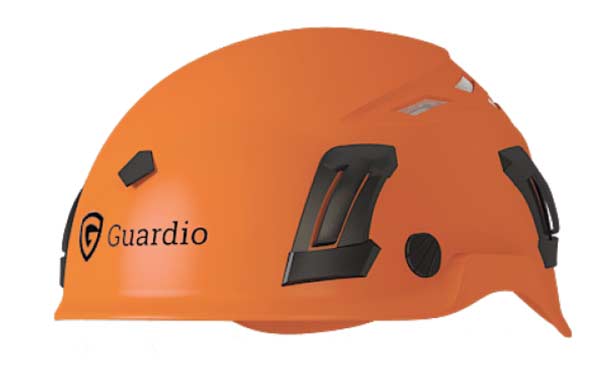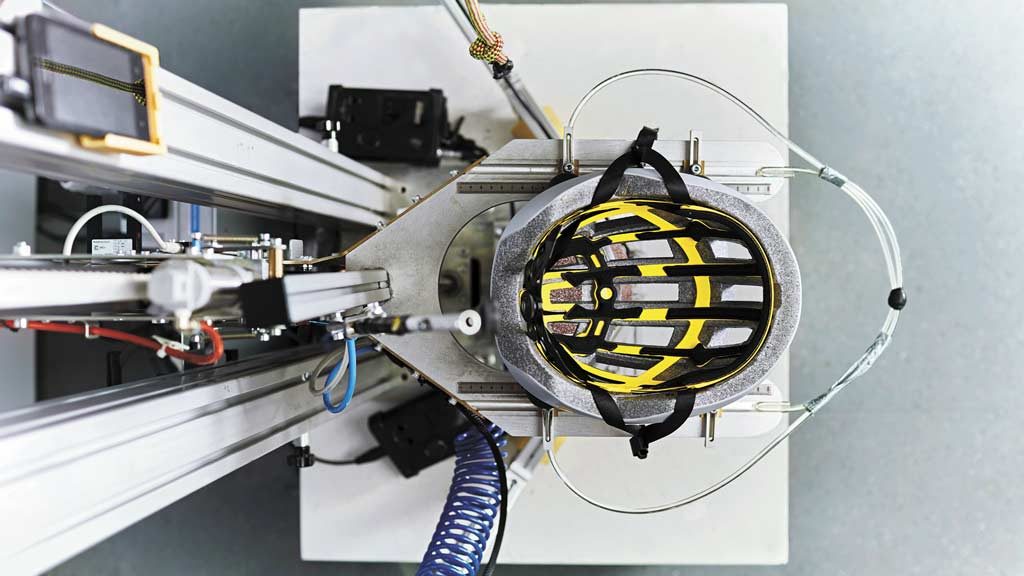Two Swedish companies have put their heads together and come up with the world’s first brain-protection heavy-duty hardhat.
Industrial safety firm Guardio and MIPS AB, a company that focuses on science-based product development for helmets, have partnered to produce a hardhat that takes head protection to a new level.
The Armet helmet, as it’s known, is in the process of being certified for the Canadian market and distributors are being lined up. It is based on Multi-directional Impact Protection System, or MIPS technology, which has been developed by leading brain surgeons and scientists, and is designed to reduce rotational forces to the head and injuries to the brain that can be caused by angled impacts to the skull.
Research has shown that rotational motion can increase the risk for minor and severe brain injuries. MIPS uses a slip-plane system that literally moves inside the helmet, mimicking the brain’s own protection system. The system can reduce the harmful rotational motion transferred to the brain by an impact.
“By developing the Guardio ARMET helmet in collaboration with the MIPS team we ensured that we could offer the market a unique product that is based on scientific research that is proven to reduce the risk of brain injuries and, by that, hopefully elevate the safety at construction sites,” says Guardio CEO Nawar Toma.
Guardio was looking to raise the level of safety equipment for customers and MIPS had the technology.
“We were already developing noise-canceling headphones for industrial use and wanted to develop a safety helmet that could be used together with our headphones,” says Toma. “When we decided to investigate the possibilities to develop a new safety helmet we realized that there was no one on the market offering an MIPS-enabled helmet for the heavy-duty industry. Despite that, several third-party test reports showed that MIPS-enabled helmets in the fields of sports most often was evaluated as best-in-test.”
Guardio contacted MIPS to see if their technology could be used in a heavy-duty helmets to reduce the risk of brain injuries. By that time, MIPS had already conducted several tests that showed it does make a difference.
MIPS technology has been around since the mid-90s when Swedish neurosurgeon Hans von Holst began to study helmet construction. He partnered with Peter Halldin, researcher at the Royal Institute of Technology, and they formed MIPS AB with three specialists in the biomechanical field from the Royal Institute of Technology in Stockholm. The company is focused on improving the safety of helmets.
MIPS CEO Max Strandwitz says the company looks at relevant injury criteria to better understand the types of accidents that occur in certain types of activities before developing solutions in specific areas. Based on the data and information, the company can then model the impact with an MIPS low-friction layer.

Strandwitz says accident statistics have been a very important factor in helping the company better understand situations at a construction site.
“One of the most important findings in the statistics is that out of head-related injuries at a construction site, 30 to 40 per cent relate to traumatic brain injuries,” he notes. “The inclusion of MIPS is an important factor of decreasing the risk for brain trauma.”
According to the Centers for Disease Control and Prevention, the construction industry has the greatest number of both fatal and non-fatal traumatic brain injuries, and from 2003 to 2010, 25 per cent of all construction fatalities in U.S. workplaces were caused by a traumatic brain injury.
An MIPS-equipped construction helmet looks almost identical to a non-MIPS helmet except for on the inside where there is a thin yellow liner beneath the pads. From the outside, the only indicator that the helmet is any different to one without MIPS is that some brands have a small yellow MIPS logo on them.
The secret behind MIPS-patented technology comes from the human brain. The brain is surrounded by a low-friction cushion of cerebrospinal fluid. MIPS mimics the brain’s own way of protecting itself by giving the MIPS-equipped helmet its own low-friction layer and slip-plane system between the helmet and the head. The layer enables a relative movement of 10 to 15 millimetres between the head and helmet in any direction at the brief moment of angled impact.
Toma says the most unique feature of the helmet is the fact that it aims to reduce rotational motion to the brain from angled impacts, but that is not all.
“We have focused a lot on the ergonomics of the helmet to ensure that the helmet is comfortable to use even during long working days. The product is well ventilated, light-weighted and the design is slim. In addition to that, we have chosen to use ABS for the outer shell and an EPP layer on the inside to ensure durability, comfort and a premium-quality product also when it comes to the materials used.”
The hardhats range in size from 53 to 61 centimetres in length, weigh about 390 grams and come in a variety of colours.
MIPS AB previously launched bicycle and motorcycle helmets in 2007 and has sold more than nine million systems to more than 78 helmet brands.
For more information on the helmets, visit www.guardiosafety.com.



I would like to see a chin strap put on hard hats so that when you fall backwards the hard hat stays on your head
Perhaps they’ll come with various brim styles to be accepted in various industries in North America. Otherwise, I second Tom Jones’s chin trap idea but more to protect others when the wearer is at heights.